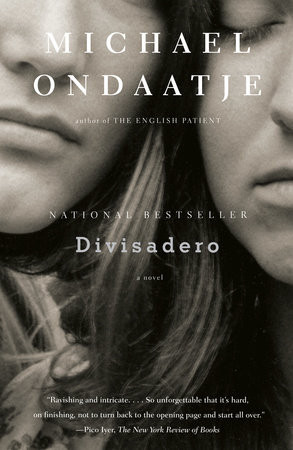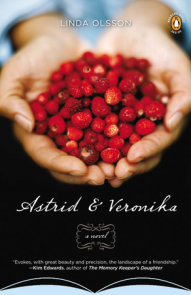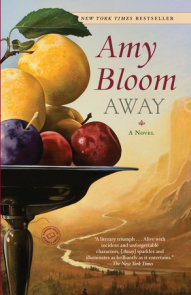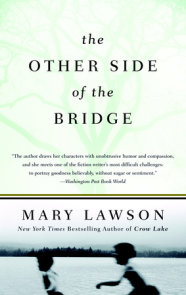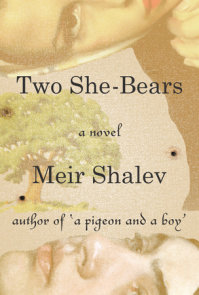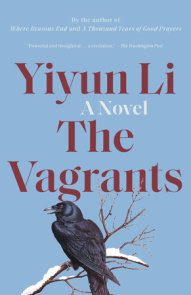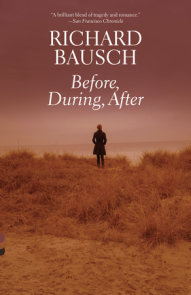READERS GUIDE
“Ravishing and intricate. . . . So unforgettable that it’s hard, on finishing, not to turn back to the opening page and start all over.”—Pico Iyer, The New York Review of Books
The introduction, discussion questions, and suggestions for further reading that follow are designed to enliven your group’s discussion of Michael Ondaatje’s Divisadero. This is his first novel since Anil’s Ghost (2000), and it may be his most complex: arching across the Gold Rush country of Northern California in the 1970s to the Nevada gambling circuit on the eve of the Iraq war to the peasant villages of France almost a century earlier. What unites the book’s various settings is an ensemble of characters connected by blood, desire, and deeper, more mysterious correspondences. There are siblings, or almost-siblings, who become lovers, and a husband and wife who pass themselves off as brother and sister. There’s also a father who adopts children, but later turns on two of them with terrible violence, and another who abandons his family, only to acquire a second family of a sort in his old age. Throughout are name changes, identity shifts, betrayals, and a continuing search for truth.
Introduction
Anna, Claire, and Coop grow up together on a ranch near Petaluma, California, at a time when people still hunt for gold residue in nearby rivers. Anna is her father’s natural child; Claire is her adopted sister, whose mother, like Anna’s, died giving birth to her; Coop is a quiet boy taken in by the family after his parents are murdered. Their childhood passes idyllically until, in Anna’s teenage years, she and Coop become lovers. When her father discovers them, he nearly beats the boy to death, stopping only when Anna stabs him with a shard of glass. In the aftermath, both Anna and Coop flee the ranch and take up new lives.Coop becomes a gambler in the casinos around Lake Tahoe and, later, the small towns north of Los Angeles, where he falls under the spell of a femme fatale with a bewitching voice and a drug habit. Claire, now an investigator for a crusading public defender, ends up rescuing him. But it’s Anna who travels the farthest from her origins, shedding her old name and leaving the United States for France. There she researches the life of the reclusive writer Lucien Segura and gradually disappears into it, living in the house that was once his and taking as a lover a man who, unbeknownst to her, was once a kind of son to Segura.
In the final third of the novel, Ondaatje delves into Segura’s past, which unfolds on both sides of the Great War. Segura’s story is beautiful and engrossing in its own right, but also seems to recapitulate-or, rather, anticipate-many events and relationships of the book’s contemporary sections: its treasonous loves, its obsessive quests, its partings. Among Divisadero’s many accomplishments is the way in which the novel transforms time, making the past as immediate as the present and imbuing the present with the tragic luster of the past.
Questions and Topics for Discussion
1. “The raw truth of an incident never ends,” Anna says [p. 1]. What might she mean by this, and how is her statement borne out in the course of the novel?
2. Setting plays a large role in Divisadero. How does Ondaatje characterize the Northern California countryside of Anna’s childhood? How would you compare it to the French countryside where Segura spends his life and where the grown-up Anna retraces it? To what extent are this novel’s characters connected to their physical environments?
3. Anna is an only child, but one with two adoptive siblings. So, for that matter, are Claire and Coop. What is the significance of adoption in this novel? Are its “natural” children necessarily the most favored? Which of these characters becomes an orphan later on, by necessity or by choice? How might losing one’s original family have an effect, for better or for worse? Why do you think Anna is introduced in a chapter titled “The Orphan”? And what might she mean when she observes, “Those who have an orphan’s sense of history love history” [p. 141]?
4. Because they were raised together, Anna’s affair with Coop has incestuous overtones. Could this be why her father reacts so brutally when he finds them together? Might this be what drives her to reject her former life, or do you think there’s another reason? Compare this liaison with the novel’s other quasi-incestuous pairings: the young Lucien Segura and Marie-Neige, who has become a symbolic sister to him; Lucien’s daughter Lucette and her younger sister’s fiancé; Marie-Neige and her husband when they masquerade as brother and sister. How does the author seem to view these relationships? Do they seem to represent a perversion of intimacy or a heightening of it?
5. Closely aligned with the theme of incest is that of hidden or mistaken identity, a theme suggested by the Sanskrit term gotraskhalana, which denotes “calling a loved one by a wrong name” [p. 152]. Which of Ondaatje’s characters pretends to be someone else? Which of them mistakes one person for another, or is misled into doing so? Which of them sloughs off a name, like the thief who calls himself Liébard and then, suddenly, on a whim, Astolphe? What do these impostures and confusions suggest about the nature of identity? Why might Liébard/Astolphe refuse to be photographed?
6. The past-both personal and collective-plays an important role in Divisadero. After turning her back on her childhood, Anna becomes an archivist, cataloguing the past via Lucien Segura’s life. After two brutal beatings as a result of his love affairs, Coop forgets his past. How does the past function in these instances, among others? Would you say these characters are trapped in it or sustained by it?
7. At what points does history intrude into this novel, and with what effect? Why might Ondaatje have chosen to set one scene involving Coop during the first Gulf War and another on the eve of the 2003 Iraq invasion?
8. How is the theme of the past reflected in the novel’s chronological scheme, which moves from the 1970s to 2003, then backward in time to the turn of the last century, then forward once more? Why might Ondaatje have chosen to structure Divisadero this way? How does this affect the novel’s sense of suspense, and how might you relate this to the kind of suspense that young Lucien and Marie-Neige find in The Black Tulip?
9. Most of Ondaatje’s characters are looking for something or someone: Anna for a long-dead writer, Coop for love and treasure (dredged from the river or extracted from the suckers at a card table), Claire for Coop. Discuss the role quests play in Divisadero. How, in particular, do they form a bridge between the novel’s present and its multiple pasts? Which of the characters’ quests is destructive, and which useful, even vital?
10. There are certain key repetitions in the novel. Discuss the doubling (and sometimes more than doubling) of the following: an attack by an animal, a woman nursing an injured man, a father coming upon his daughter making love, a man imparting a skill or craft to a younger one.
11. What role does craft play in this novel? Discuss those scenes in which someone learns to, for example, build a cabin, or deal poker, or repair a clock, or write a novel. What-apart from the skill-is being imparted? What distinguishes those characters who have mastered a craft from those who haven’t?
12. Most of Divisadero’s characters are motivated by love, of various sorts. How does Ondaatje characterize these kinds of love? Which kinds are exalting and which degrading, and why? Compare Anna’s love for Coop to the love that Claire feels for him, Coop’s love for Anna to that which he later feels for Bridget, Rafael’s love of his mother to Segura’s love of his daughter, Lucette.
13. The novel takes its name from a street in San Francisco where Anna lives for a while. In Spanish the word means both a division and a vantage point [pp. 142-3]. Does this double meaning suggest a way of looking at-viewing-the entire novel?
14. At least two of this book’s narratives lack an obvious conclusion. Why might Ondaatje have chosen to end them when he does? How is this related to Anna’s aforementioned statement: “The raw truth of an incident never ends”?







